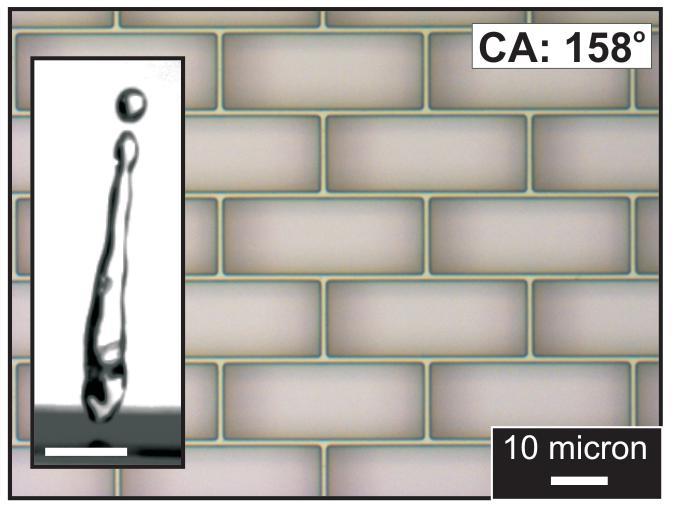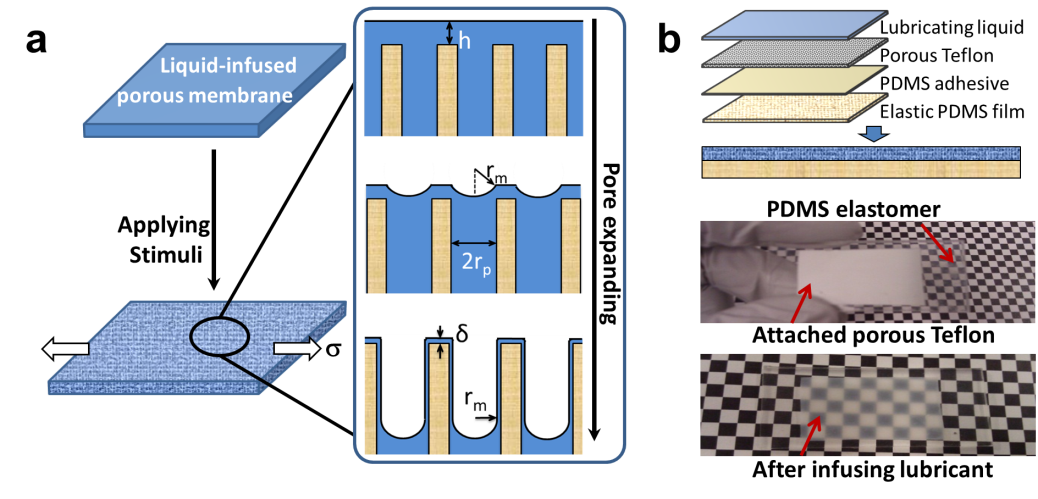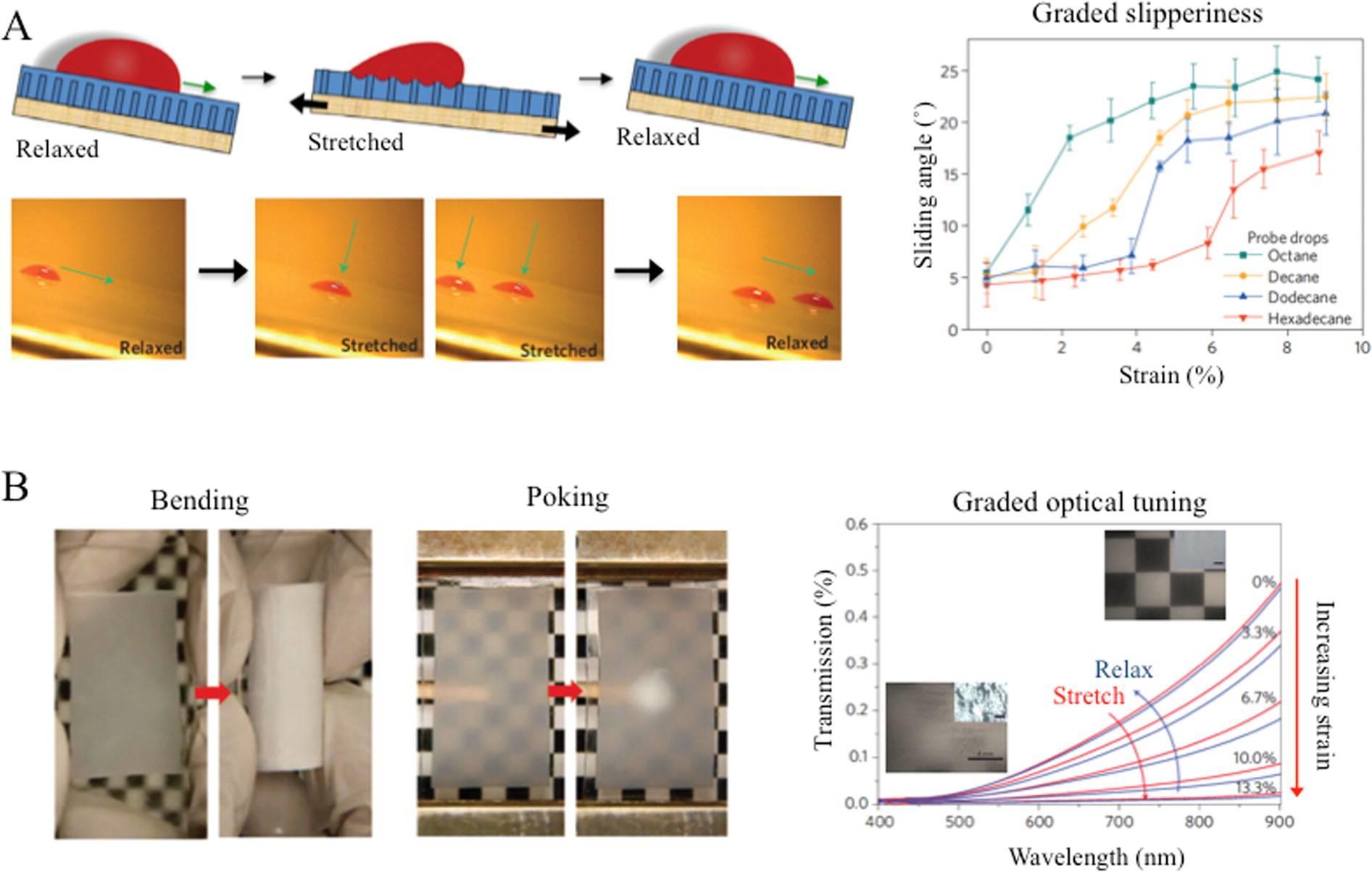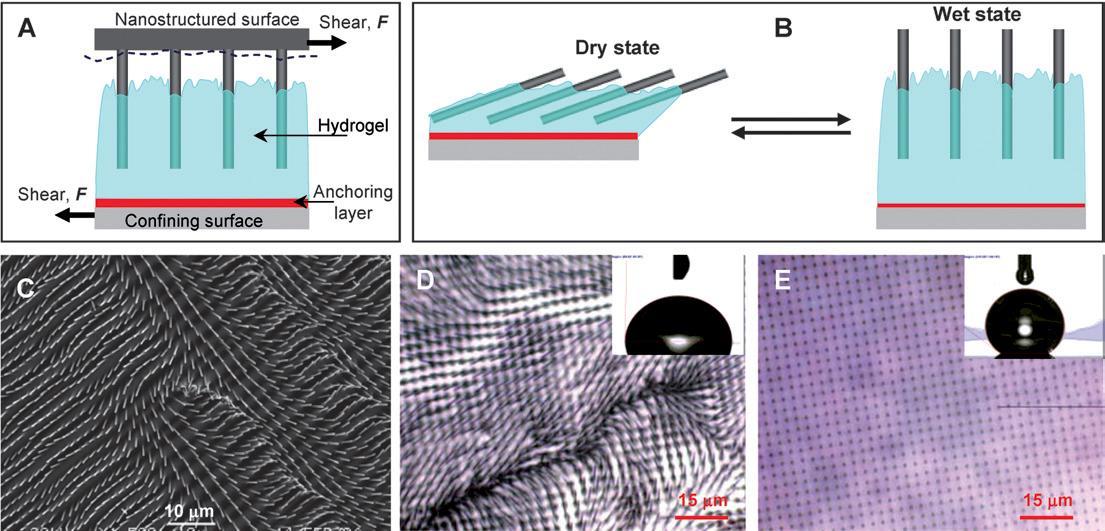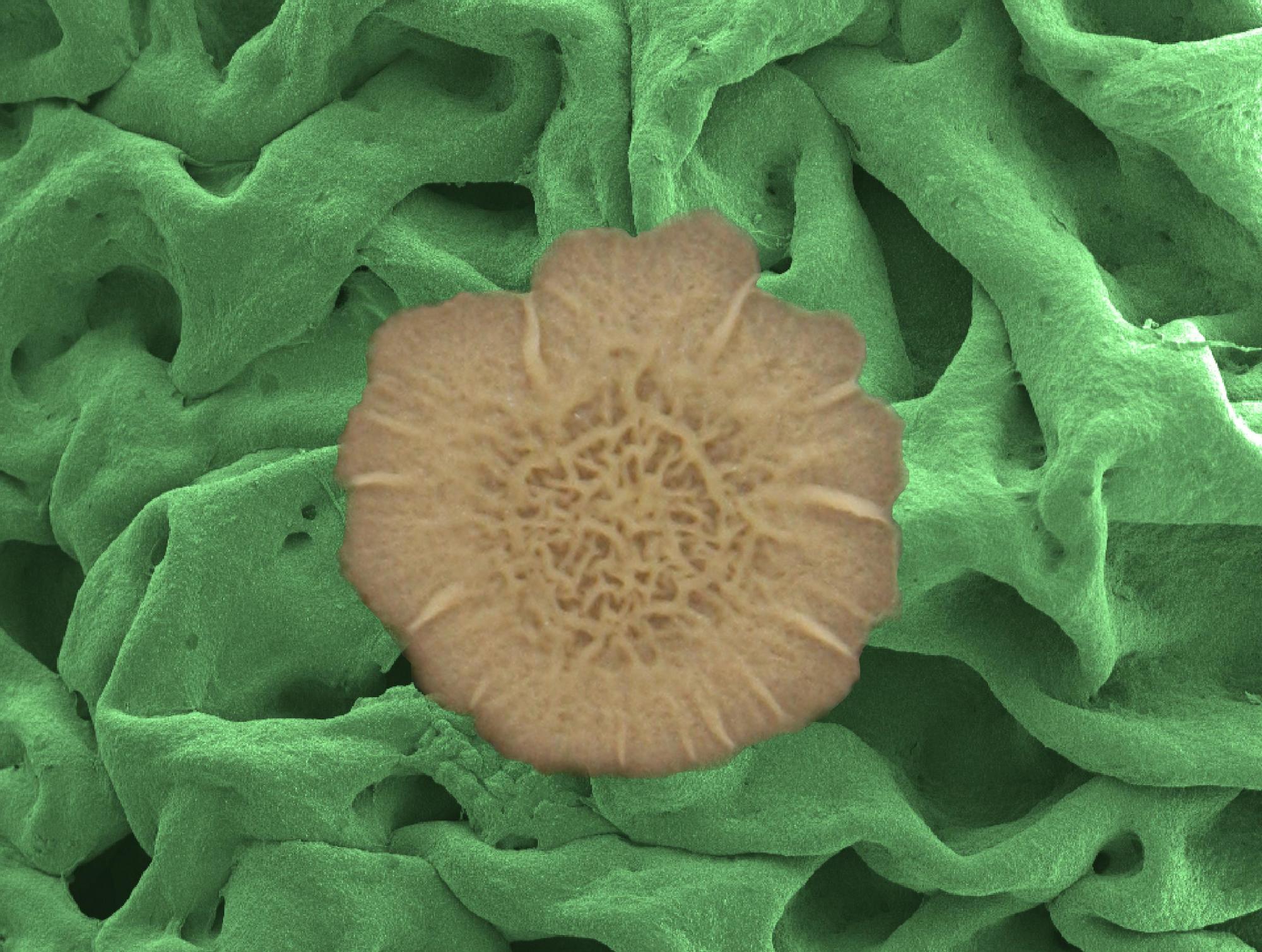The need to fend off water is as fundamental as the need to acquire it: water absorption by buildings fosters mold growth and structural breakdown, stagnant surface water breeds disease, and waterlogged clothing interferes with body temperature regulation.
Wettability
We traditionally rely on chemical coatings to prevent water absorption and retention, but these wear off over time and can be toxic. In contrast, many organisms use built-in topography: water striders keep their legs dry, mosquitoes defog their eyes, and leaves shed raindrops by limiting water contact to the tips of nanoscale bristles on their surfaces. Air fills the rest of the space under the drop, such that the bristles create a patterned air-solid surface on which macroscopic droplets slide and molecules within each droplet diffuse largely as if the drop were in air.
We are investigating how patterned features govern motion at these unique interfaces, and have recently optimized liquid-surface dynamics to design ice-preventive materials that deflect impacting droplets at sub-freezing temperatures and nucleate only unstable, low-adhesion ice below that. Since topographic patterns disappear if the bristles lie down, water resistance can be turned on and off simply by bending or tilting, and we use this unique feature to design materials that reversibly switch between hydrophobic and hydrophilic behavior in response to environmental conditions. While liquids other than water are more difficult to resist due to their stronger tendency to spread on a surface, we have recently made the surprising discovery that biofilm – a bacterial commune encased in slime – has a unique multiscale topography that fends off not only water but an unprecedented assortment of other liquids, and we are designing previously elusive resilient, highly nonwetting materials based on our intriguing new role model.

